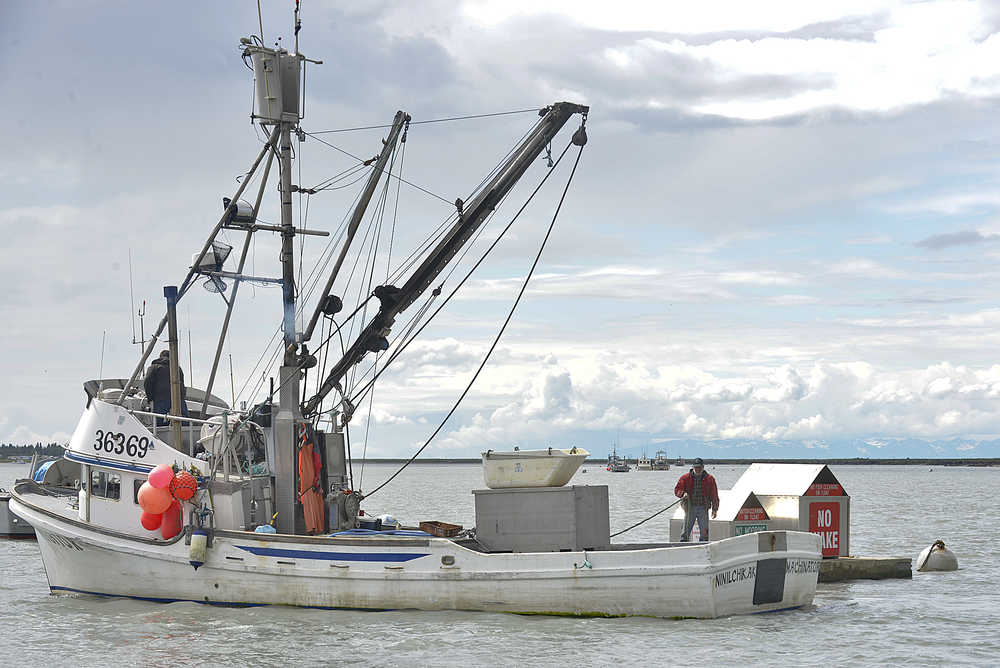Most of the benefit from the commercial fishing industry goes to local government, while the state overspends itself, according to a new analysis.
A study conducted by Bob Loeffler and Steve Colt of the University of Alaska Anchorage’s Institute of Social and Economic Research found that the state spends about $27.2 million more on commercial fishing than it receives in revenue from the industry.
This includes regulation, operations and capital projects. However, it does not consider federal funds, which play a role in Alaska’s fisheries as many salt-water fisheries are at least partially federally managed.
Local governments make out considerably better — they take in about 40 percent of the revenue from the commercial fishing industry, according to the analysis. And that does not include the benefits to the local economy, such as spending at local businesses.
The state also spends far more on commercial fishing than it does on other sectors of the economy, such as mining and tourism, which where also examined in the ISER report. Including operations and capital projects, the state spends approximately $78.3 million on the commercial fishing industry every year. Combined with local governments’ expenditures, the total reaches approximately $96.8 million.
The state brought in more to the unrestricted general fund from cigarette taxes than it does from commercial fishing in fall 2015, according to the Department of Revenue’s Revenue Sources Book.
Loeffler, a visiting professor of public policy at UAA, said the study was not intended to be a cost-benefit analysis but more background information about how the state spends its money on these industries and how they fit into the overall economy of Alaska.
“I think it is important to look at the fiscal effects (of each industry),” Loeffler said. “(The industries) bring huge benefits to communities, to individuals, in lots of ways. We’re not suggesting they don’t. I think they’re a very important part of state policy.”
The Division of Economic Development, which commissioned the study, did not return requests for comment on the purpose of the study. Colt, a professor of economics with UAA, said he thought the study would bring more facts to the conversation about state spending.
“I think it’s important that we do this every few years, so we can get a sense of how things are changing over time,” Colt said. “I think they just benefit of having more from these facts on the table. Hopefully we saved a lot of people from rediscovering things over and over.”
The commercial fishing industry provides 15 sources of revenue for the state, with the majority stemming from the state’s share of the Fisheries Business Tax, which brought in approximately $25.1 million in 2014. The two next largest taxes, the Salmon Enhancement Tax on aquaculture and the Seafood Marketing Assessment, brought in $12.8 million and $10.2 million respectively, according to the ISER study.
Locally, the revenue comes from taxes distributed by the state, sales and property taxes related to commercial fishing and other spending in the community, such as tackle and food. Municipalities altogether take in more than the state in the fisheries business tax — $26.5 million in 2014. Municipally imposed fisheries taxes brought in $20.3 million in 2014 and the municipal share of the fishery resource landing tax totaled about $5.5 million in 2014, according to the study.
The local governments do spend some on managing local commercial fisheries, such as Homer’s harbormaster position. Overall, however, the management of the fisheries is left to the state.
The state revenues and expenses are fairly accurate, Loeffler said. However, the study was not intended to inform the state’s current budget debate.
“This really wasn’t about that,” Loeffler said. “Clearly, we should manage mining to be sure that it is consistent with protecting the environment. The same is true with commercial fishing.”
Additionally, what they found with the capital projects was surprising, Colt said. Many of the capital projects, which some consider one-time expenses, will require maintenance and spending in the future, he said.
“I think a lot of people assume that we can just cut the capital budget to zero and forget about it, but a lot of the things we documented were things that we’re going to have to keep up with, like the roof on a fish hatchery,” Colt said. “In my view, it’s really going to turn out to be no different in my view than the operating budget.”
Reach Elizabeth Earl at elizabeth.earl@peninsulaclarion.com.

